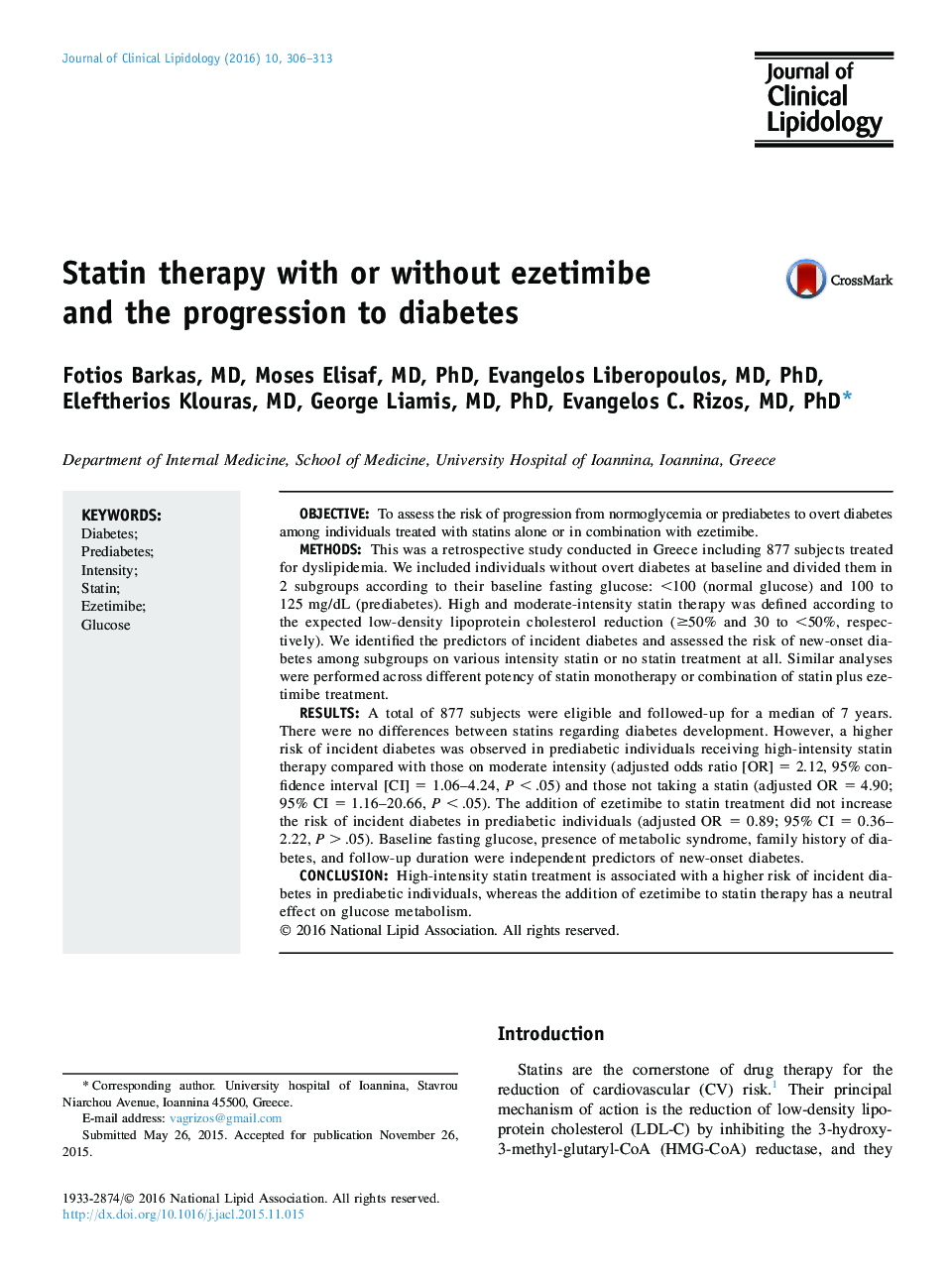| Article ID | Journal | Published Year | Pages | File Type |
|---|---|---|---|---|
| 5985242 | Journal of Clinical Lipidology | 2016 | 8 Pages |
â¢We assessed the diabetes risk among individuals taking statin ± ezetimibe.â¢No difference was found between the various statins.â¢High-intensity statins were related with a higher diabetes risk in prediabetic individuals.â¢The addition of ezetimibe to statin therapy had a neutral effect on glucose metabolism.
ObjectiveTo assess the risk of progression from normoglycemia or prediabetes to overt diabetes among individuals treated with statins alone or in combination with ezetimibe.MethodsThis was a retrospective study conducted in Greece including 877 subjects treated for dyslipidemia. We included individuals without overt diabetes at baseline and divided them in 2 subgroups according to their baseline fasting glucose: <100 (normal glucose) and 100 to 125 mg/dL (prediabetes). High and moderate-intensity statin therapy was defined according to the expected low-density lipoprotein cholesterol reduction (â¥50% and 30 to <50%, respectively). We identified the predictors of incident diabetes and assessed the risk of new-onset diabetes among subgroups on various intensity statin or no statin treatment at all. Similar analyses were performed across different potency of statin monotherapy or combination of statin plus ezetimibe treatment.ResultsA total of 877 subjects were eligible and followed-up for a median of 7 years. There were no differences between statins regarding diabetes development. However, a higher risk of incident diabetes was observed in prediabetic individuals receiving high-intensity statin therapy compared with those on moderate intensity (adjusted odds ratio [OR] = 2.12, 95% confidence interval [CI] = 1.06-4.24, P < .05) and those not taking a statin (adjusted OR = 4.90; 95% CI = 1.16-20.66, P < .05). The addition of ezetimibe to statin treatment did not increase the risk of incident diabetes in prediabetic individuals (adjusted OR = 0.89; 95% CI = 0.36-2.22, P > .05). Baseline fasting glucose, presence of metabolic syndrome, family history of diabetes, and follow-up duration were independent predictors of new-onset diabetes.ConclusionHigh-intensity statin treatment is associated with a higher risk of incident diabetes in prediabetic individuals, whereas the addition of ezetimibe to statin therapy has a neutral effect on glucose metabolism.
